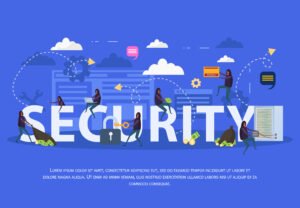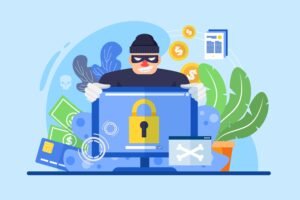Introduction to Computer Forensics

In today’s digital age, crimes are no longer confined to the physical world. Cybercrime is on the rise, and criminals are becoming increasingly sophisticated. This is where Computer Forensics plays a critical role. Also known as digital forensics, computer forensics involves collecting, analyzing, and preserving digital evidence to investigate cybercrimes. It helps law enforcement agencies, corporations, and cybersecurity professionals uncover hidden data and track malicious activities.
What is Computer Forensics?

Computer Forensics is the process of identifying, preserving, analyzing, and presenting digital evidence in a legally admissible manner. Specifically, it focuses on investigating data stored in computers, networks, and digital devices following a security breach or cyberattack. The primary goal is to trace unauthorized access, recover deleted files, and understand exactly how the crime was committed.
Moreover, computer forensics is widely used in cybercrime investigations, data breaches, financial fraud, insider threats, and even in civil litigation involving digital records.
Importance of Computer Forensics

The importance of computer forensics has grown significantly with the increasing use of digital technology. It helps in:
-
Identifying Cyber Criminals: Traces the origin of cyberattacks and identifies perpetrators.
-
Recovering Lost Data: Recovers deleted or damaged files for evidence or internal use.
-
Supporting Legal Investigations: Provides admissible evidence in courts for criminal or civil cases.
-
Maintaining Business Continuity: Helps organizations investigate insider threats and data leaks.
-
Strengthening Cybersecurity Posture: Assists in identifying security gaps and preventing future incidents.
Key Steps in Computer Forensics Investigation

A typical computer forensics investigation follows a systematic approach to ensure evidence integrity and legal compliance:
-
Identification: Detect and recognize potential sources of digital evidence.
-
Preservation: Secure the scene and isolate devices to prevent data alteration.
-
Collection: Extract and copy data using forensically sound tools and methods.
-
Examination: Analyze the data to uncover hidden, encrypted, or deleted information.
-
Analysis: Reconstruct the timeline and identify the methods used by attackers.
-
Reporting: Document findings in a clear and court-admissible format.
Common Forensics Tools

To begin with, computer forensics relies on specialized tools to perform in-depth analysis of systems and data. For example, some of the most commonly used tools include:
-
FTK (Forensic Toolkit): Used for recovering passwords, deleted files, and emails.
-
EnCase: A powerful tool for hard drive imaging, evidence analysis, and reporting.
-
Autopsy: An open-source digital forensics platform for file analysis and timeline creation.
-
Volatility: Used for memory forensics to analyze RAM dumps and running processes.
-
Wireshark: Captures and analyzes network traffic for intrusion detection.
Types of Digital Evidence in Computer Forensics

Digital evidence can come in various forms, including:
-
Emails and Chat Logs: To trace communication patterns.
-
Browser History: To identify visited websites and downloads.
-
Metadata: Hidden information in documents and images.
-
Log Files: Tracks system and user activities.
-
Deleted Files: Recovered from hard drives or SSDs.
-
Network Traffic: Helps identify data exfiltration or malicious connections.
Applications of Computer Forensics

Computer forensics is applied in multiple domains:
-
Law Enforcement: To solve cybercrimes such as hacking, identity theft, and online harassment.
-
Corporate Investigations: To detect insider threats, IP theft, and policy violations.
-
Military and Intelligence: For national security and cyber-espionage cases.
-
Litigation and eDiscovery: For civil disputes and fraud investigations.
Skills Required

To excel in computer forensics, professionals must have a strong foundation in:
-
Operating Systems (Windows, Linux, macOS)
-
File System Analysis (NTFS, FAT, EXT4)
-
Knowledge of Cyber Laws and Legal Procedures
-
Familiarity with Forensics Tools and Scripting
-
Attention to Detail and Analytical Thinking
Career Scope
The demand for digital forensics professionals is growing globally. Career roles include:
-
Digital Forensics Analyst
-
Incident Responder
-
Cybercrime Investigator
-
Forensics Consultant
-
Law Enforcement Cyber Expert
Popular certifications to boost your career in computer forensics include GCFA (GIAC Certified Forensic Analyst), CHFI (Computer Hacking Forensic Investigator), and CCE (Certified Computer Examiner).
Challenges
Despite its benefits, it faces several challenges:
-
Encryption: Strong encryption makes data recovery difficult.
-
Data Volume: Increasing data storage requires more time and resources to analyze.
-
Anti-Forensics Techniques: Attackers use methods to erase or obfuscate data.
-
Legal Complexities: Admissibility of evidence requires adherence to strict legal standards.
Conclusion

It is a vital component of modern cyber security. As cyber threats continue to evolve, so does the need for skilled digital investigators. Whether it’s solving a hacking case or recovering critical business data, it helps bridge the gap between technology and justice. With the right tools, techniques, and legal knowledge, professionals in this field can uncover the truth hidden deep within digital devices.